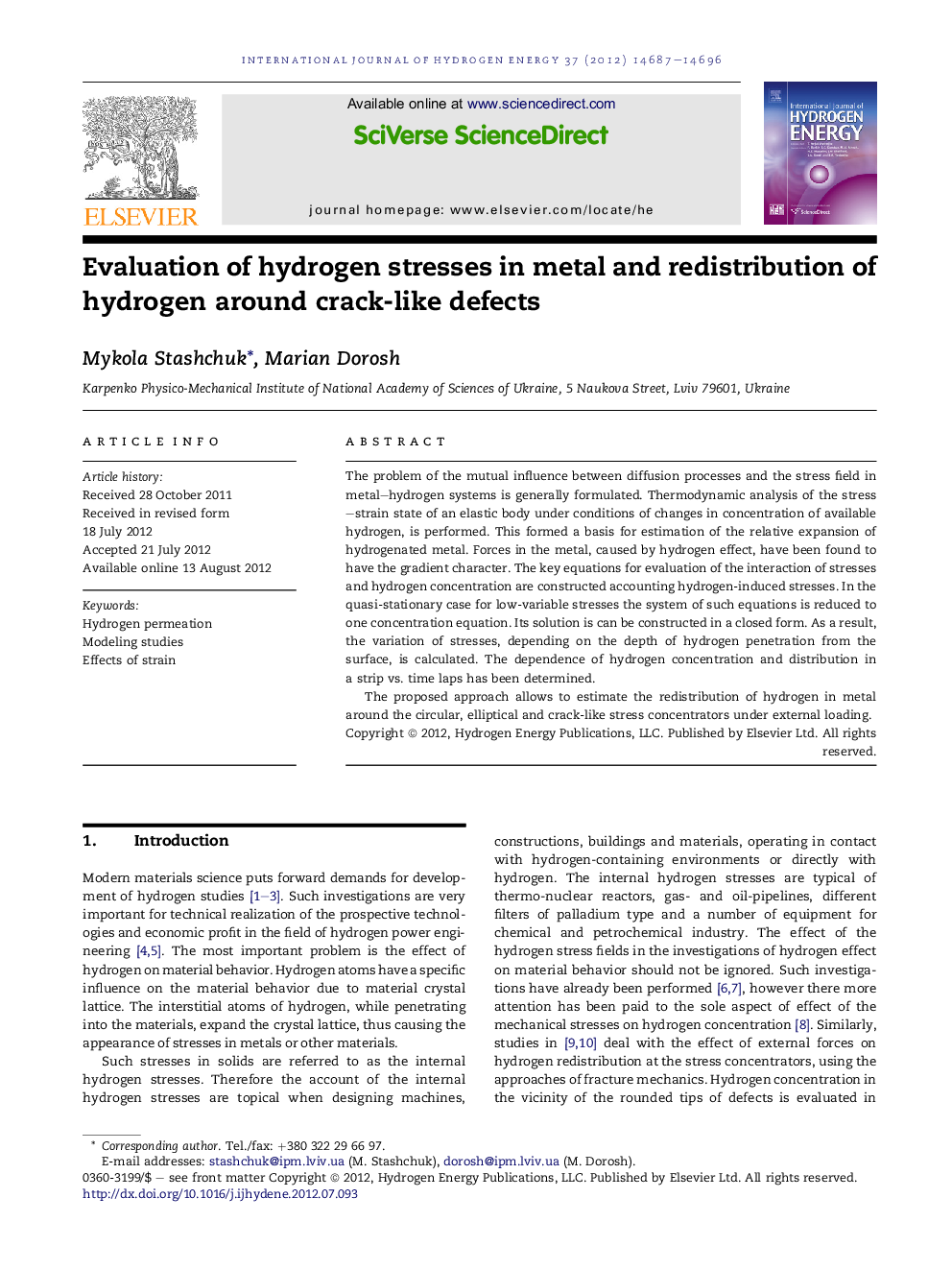| Article ID | Journal | Published Year | Pages | File Type |
|---|---|---|---|---|
| 1274817 | International Journal of Hydrogen Energy | 2012 | 10 Pages |
The problem of the mutual influence between diffusion processes and the stress field in metal–hydrogen systems is generally formulated. Thermodynamic analysis of the stress–strain state of an elastic body under conditions of changes in concentration of available hydrogen, is performed. This formed a basis for estimation of the relative expansion of hydrogenated metal. Forces in the metal, caused by hydrogen effect, have been found to have the gradient character. The key equations for evaluation of the interaction of stresses and hydrogen concentration are constructed accounting hydrogen-induced stresses. In the quasi-stationary case for low-variable stresses the system of such equations is reduced to one concentration equation. Its solution is can be constructed in a closed form. As a result, the variation of stresses, depending on the depth of hydrogen penetration from the surface, is calculated. The dependence of hydrogen concentration and distribution in a strip vs. time laps has been determined.The proposed approach allows to estimate the redistribution of hydrogen in metal around the circular, elliptical and crack-like stress concentrators under external loading.
► Mutual influence of hydrogen concentration and the stress-strain state in the “metal–hydrogen” system is considered. ► The concentration–deformation equation, which takes into account hydrogen-induced stresses is written down. ► The distribution of hydrogen concentration and hydrogen stresses for a strip is established. ► The concentration of hydrogen around circular, elliptic and crack-like defects under metal deformation is calculated. ► It is shown that for a crack with process zones the highest concentration of hydrogen is in these zones.
